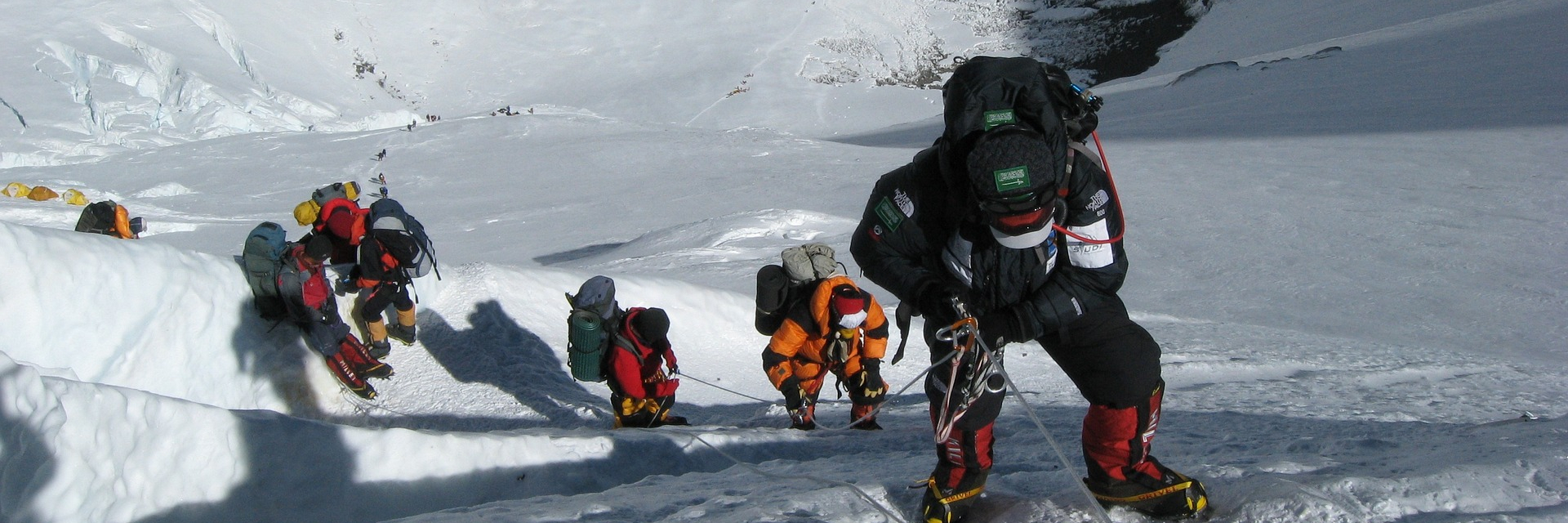
The Everest region in Nepal is synonymous with mountaineering and offers some of the most iconic and challenging climbing and expedition opportunities in the world. Home to the mighty Mount Everest, as well as numerous other towering peaks, the region attracts climbers and adventurers from around the globe seeking to test their limits and experience the thrill of conquering these majestic mountains. Here are some key details about climbing and expeditions in the Everest region:
Mount Everest:
Mount Everest, standing at a staggering height of 8,848 meters (29,029 feet), is the highest peak in the world and the ultimate dream for many climbers. Summiting Everest requires exceptional mountaineering skills, physical fitness, mental resilience, and extensive high-altitude experience. Climbing Everest is a significant undertaking that demands careful planning, thorough preparation, and a dedicated team of Sherpas and support staff.
Expeditions to Mount Everest are typically organized during the spring (April to May) and autumn (September to November) seasons when weather conditions are relatively more stable, offering the best chance for a successful summit bid. Climbers typically establish base camps, higher camps, and acclimatization camps along the South Col route, utilizing fixed ropes and camps set up by Sherpa teams.
Other Peaks in the Everest Region:
Apart from Mount Everest, the Everest region offers a multitude of other peaks that provide a range of climbing and expedition opportunities. Some notable peaks in the region include:
Lhotse (8,516 meters/27,940 feet): Located adjacent to Mount Everest, Lhotse is the fourth highest peak in the world. Climbing Lhotse is a challenging endeavor, involving technical sections, steep slopes, and high-altitude climbing.
Nuptse (7,861 meters/25,791 feet): Nuptse, meaning "West Peak" in Tibetan, is a prominent mountain in the Everest region. It presents a challenging climb with its steep and icy slopes.
Ama Dablam (6,812 meters/22,349 feet): Known for its distinctive pyramid-shaped peak, Ama Dablam is a popular choice for climbers seeking a technically demanding climb. It requires a combination of rock, ice, and mixed climbing skills.
Island Peak (6,189 meters/20,305 feet): Island Peak, also known as Imja Tse, is a popular trekking peak and a stepping stone for climbers seeking higher altitudes. It offers a relatively non-technical climb, making it accessible to climbers with basic mountaineering skills.
Expedition Logistics and Support:
Embarking on a climbing expedition in the Everest region requires careful planning and logistics. Many climbers choose to join organized expeditions led by experienced climbing agencies or mountaineering guides who specialize in the Everest region. These agencies provide comprehensive support services, including obtaining climbing permits, arranging transportation, coordinating logistics, providing experienced Sherpa guides, organizing equipment and supplies, and managing base camp facilities.
Sherpas, renowned for their mountaineering expertise and intimate knowledge of the mountains, play a crucial role in supporting climbing teams. They assist in establishing routes, fixing ropes, carrying loads, setting up camps, and ensuring the safety and well-being of climbers.
Training and Experience:
Climbing and expeditions in the Everest region demand a high level of physical fitness, technical proficiency, and prior mountaineering experience. Climbers should have experience in high-altitude trekking and possess basic mountaineering skills, including familiarity with glacier travel, rope handling, and climbing techniques. It is recommended to have prior experience on other challenging peaks before attempting major expeditions in the Everest region.
Climbers should also undergo proper acclimatization and altitude training to prepare their bodies for the

Feel free to inquire with me, and I will craft a customized holiday experience for you! You're in for incredible adventures and the creation of unforgettable memories!
Discover incredible offers for your upcoming adventure by subscribing to our newsletter with the latest travel tips and updates.
